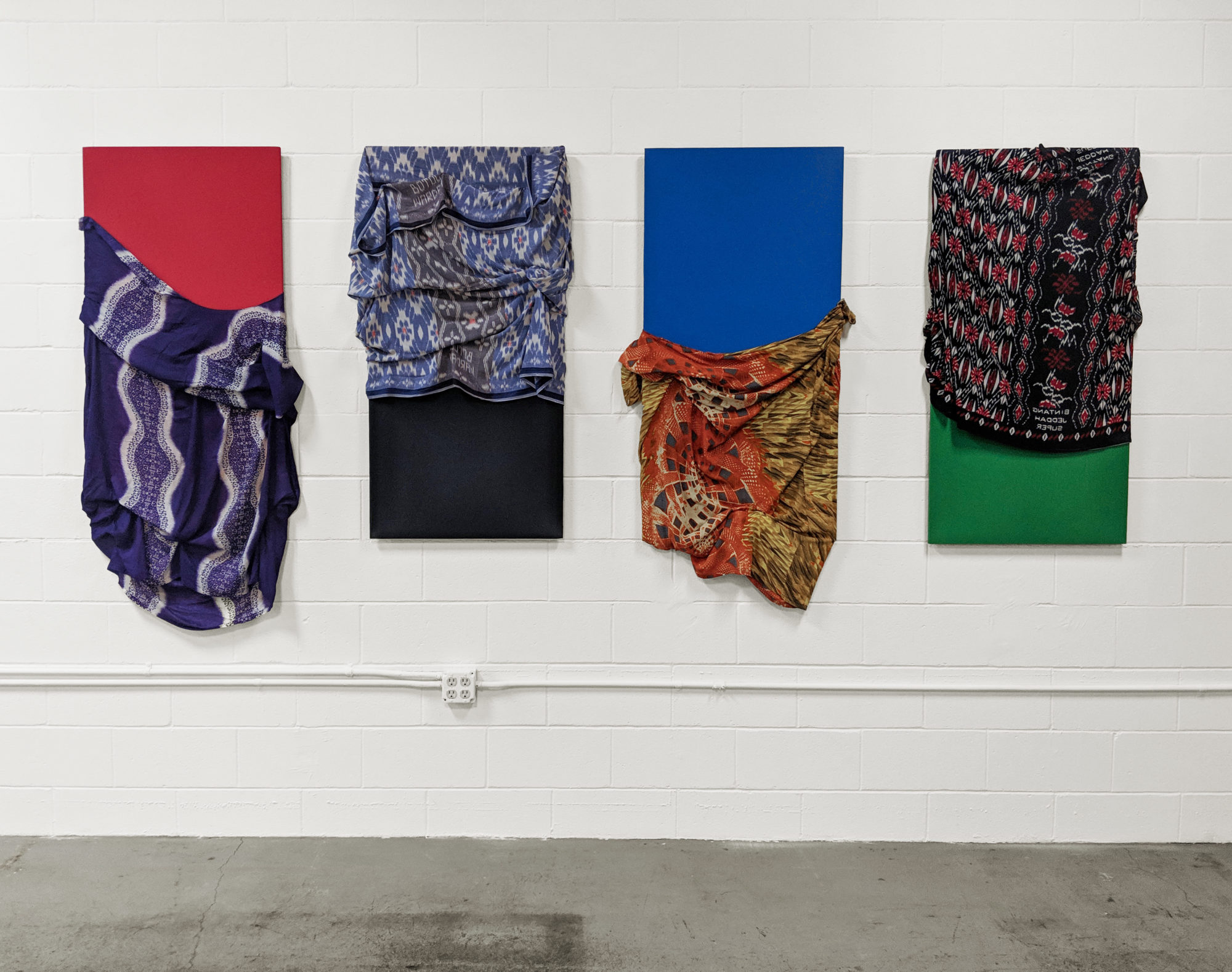Khadija Charif, Kaamil A. Haider, & Yasmin Yassin: Spearwave V3.N1, #12
Reviewed by: R Yun Keagy
Soomaal House of Art
Feb 16–Mar 9, 2019

For the first time since its inception four years ago, Minneapolis collective Soomaal House of Art has a permanent location. The inaugural celebration of the new space was an installment of Spearwave (v3.n1), the monthly evening series dedicated to showcasing works of visual art in tandem with spoken word, music or performance by local and international Somali artists. Spearwave events, like Soomaal House of Art’s annual exhibits, have in the past taken place in temporary locations across the city including private homes, galleries, storefronts, mosques and outdoor terraces. On a snowy night in February a large crowd gathered in the new rectangular concrete gallery on Minnehaha Avenue to usher in a new era of the collective’s on-going artistic activism in the community, and to participate in the showcasing of new artworks. Featured were an ethnographic installment of photographs and texts by artist Yasmin Yassin, a set of sculptural paintings by collective co-founder and designer Kaamil A. Haider, and an original reading/performance by poet and photographer Khadija Charif.
Yassin’s work, situated near the entrance, appeared as a salon-style series of framed and formal photographs: chest-to-head portraits in painterly, muted color. Below the photographs at the bottom of the wall and on the concrete floor were appliquéd texts forming fragments of speech, clearly excerpted from verbal conversations between Yassin and the subjects of her portraits, most expressing aspirational prospection of self and humanity. Water from melted snow beneath viewers’ boots further animated these silent texts, texturally making them “sound out” with the liveness of the event. Entitled “What I Sow”, the series’ subtitle, “a portrait series of emerging youth and identity”, reveals its content but also Yassin’s interest in ethnography and futurity. The young subjects seem to look pensively out of the frame at possible futures, or confidently at the viewer (in the original instance, a photographer who supplanted an ordinary photoshoot with a prolonged conversation). Navigating both cultural and professional hybridity, Yassin is part Somali, a Vancouver (British Columbia) native, a trained geneticist and DNA researcher, a photographer and “visual-digital artist.” Her career as a scientist and researcher is manifested in the precision and minimalism of her portraits, and in the priority she places on thorough ethnographic inquiry. A recent transplant to Minneapolis, she describes the city as a somewhat mythical locale, one she grew up hearing of in Canada as “the place where the Somalis are.” The portraits are imbued with this mythic sense, as the artifice of a studio backdrop and a subtle blur subdue the realism of the photographs. Her subjects, of diverse cultural backgrounds like her, are in many ways perhaps younger examples of the artist herself, always emerging…
In stark opposition, the piece by Haider, “Talantaalis” (meaning “duet”), consisted of four large vertical canvases partially draped in different configurations of cloth. The canvases, painted respectively in bold red, black, blue and green, recall elements of American abstraction, namely Ellsworth Kelly’s 2007 work “Green Blue Black Red”. To be fair, these are the four colors that Haider most often conjures (at the first Spearwave in 2016, he had a piece entitled “b,b,r, g”), a sort of signature of both his work as a graphic designer and visual artist. In “Talantaalis”, this allusion to modern abstraction is complicated by Haider’s playful wrapping of each geometry in contrasting colors of patterned batik cloth or traditional Somali garment, as if the paintings could assume an unexpected identity through apparel while still disclosing artifactual evidence of a former state. Further refining this juxtaposition were the imprints that I noticed when looking closely at the cloth: Indonesian and Arabic words/brands. Fabricated in Indonesia and Saudi Arabia, the materials were shipped to Somalia and diasporic centers like London and Nairobi. Indeed, Haider purchased them at a Somali market in Minneapolis, two female and two male garments. Several of Haider’s family members utilized or wore them for some time prior to their life as sculptural elements, and thus Haider talks of this piece as conveying not only a visual symbol but also the olfactory sense of a cultural “home.” The “duet” of this work is a sort of dance within these four panels that exist on a number of social, geographical, temporal and sensorial registers: male/female, here/there, now/then, modern/traditional, sight/smell. As with Yassin, Haider’s work is rooted in cultural hybridity, and in the case of “Talantaalis”, the mixed aesthetics and flows of a globalized economy. For all of these reasons, the piece for me is endlessly arresting.
The performative element of the evening was Charif’s theatrical reading of A blind taxi driver’s terms and conditions, a segment from her original in-progress book. Utilizing collective co-founder and curator Mohamud Mumin as a stand-in and reader for the part of the driver, Charif stood next to Mumin who faced away from the audience in a suit jacket and large-brimmed black hat. The title of the piece is a puzzling proposition in and of itself, and the back and forth dialogue read by Mumin and Charif elicited smiles, laughter and curiosity from the audience. This enigmatic, unfinished quality of the reading is emblematic of the spirit of Spearwave events, which are invested in the dynamic and spontaneous rather than polished and refined. As a curator, Mumin has expressed his desire for artists to have the freedom of experimentation, whether or not a work becomes a completed piece for the annual exhibit or elsewhere. For me, the most salient aspect of the entire project supported by the collective founders of Soomaal House of Art (Haider, Mumin and director Khadijah Muse) is the challenge presented to Minneapolis audiences to constantly reassess our learned assumptions based in western aesthetic principles, standards and institutionalized practices. Perhaps the only organization promoting contemporary Somali art of its kind in the world, we are lucky to bear witness.
